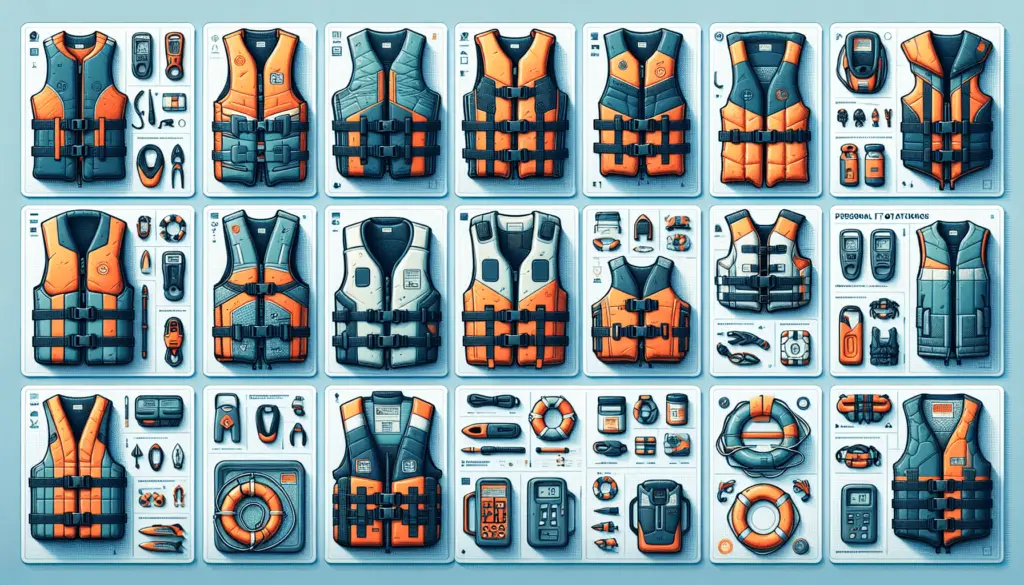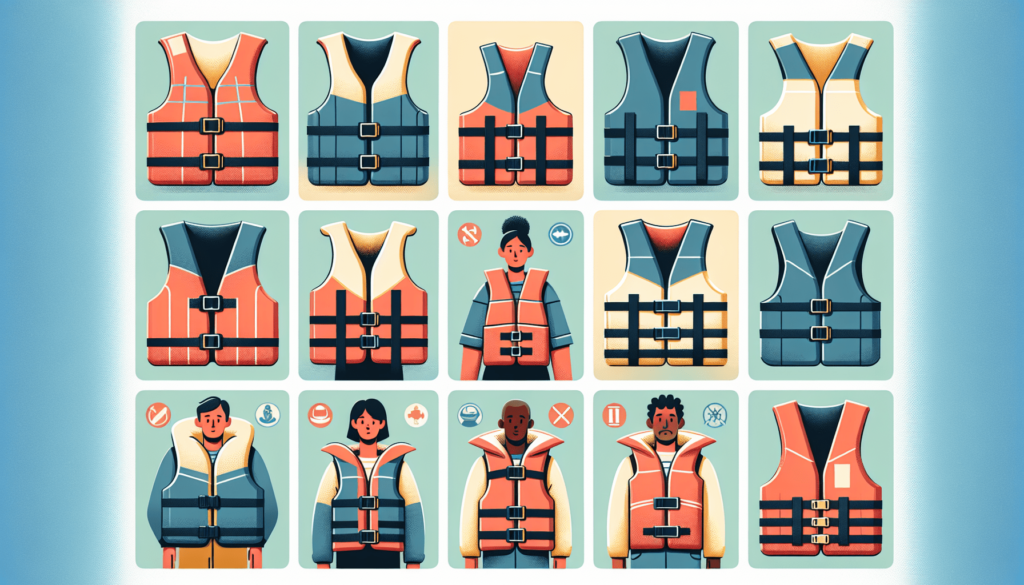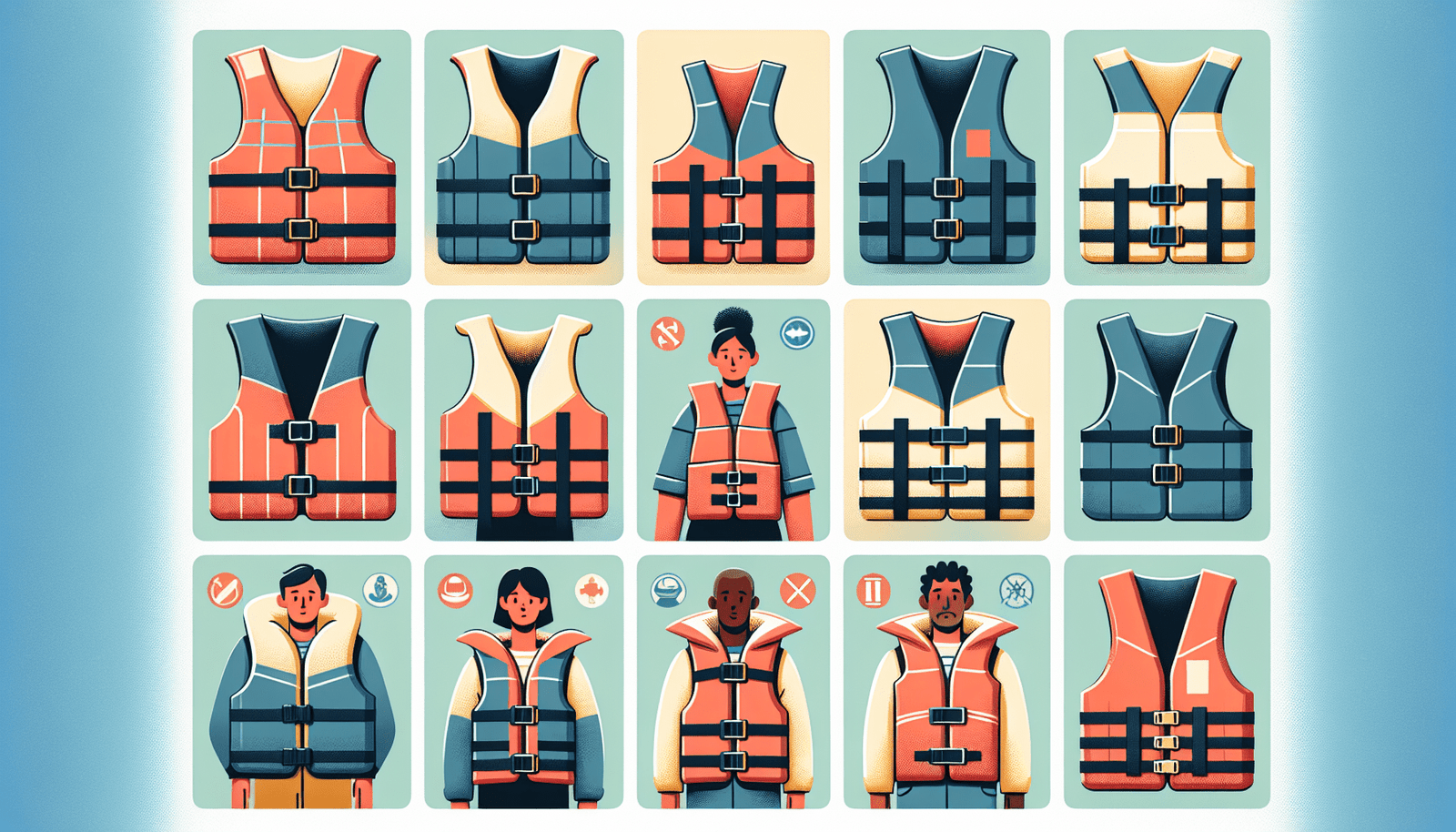Let’s set sail on a gusty sea of knowledge, where the waves of understanding lift you to the zenith of safety. Your journey through the pages of “What You Need To Know About life jackets and Personal Flotation Devices” will navigate you through the wavy waters of choosing the right gear. Here, you will learn to recognize the covert differences between life jackets and flotation devices, to achieve the competency of a seasoned mariner. Prepared for all the life’s uncertainties, you will be equipped to handle whatever the stormy sea may cast at you. Water brings life, but it also demands respect – and part of that respect is ensuring you are properly suited for its unmapped depths.

Understanding Life Jackets and Personal Flotation Devices
Imagine floating under the wide blue sky… the vast expanse of water beneath you, waves lapping against your body, the gentle push and pull of the ocean tide. Now imagine this, without a life jacket. A terrifying prospect, isn’t it? That piece of ‘flotation attire’, often taken for granted, can be the difference between a thrashing panic and a secure float, between life and death. In this article, we delve deep into the world of life jackets and Personal Flotation Devices (PFDs).
Defining life jackets
At the most basic level, a life jacket is a protective garment designed to assist in keeping you afloat in water. It works by providing buoyancy, enabling you to maintain an upright position and keeping your head above the water.
Differentiating life jackets from Personal Flotation Devices (PFDs)
Contrary to popular belief, life jackets and PFDs are not the same. The primary difference lies in their buoyancy level and intended use. A life jacket is specifically designed to turn an unconscious person face up in the water, a trait that most PFDs lack. On the other hand, PFDs offer more comfort and mobility and are well-suited to conscious users in relatively calm and close-to-shore waters.
Understanding the role of life jackets and PFDs in water safety
The role that life jackets and PFDs play in water safety is paramount. They provide a much-needed safety buffer for swimmers, boaters and water sports enthusiasts alike. In a peril, such as capsizing or falling overboard, these devices provide immediate buoyancy, allowing you to float rather than swim, thus reducing the risk of drowning.
Different Types of Life Jackets
Harnessing a life jacket is likened to wielding a sword in a dueling match. Just as there are different types of swords for varying combat strategies, there are different kinds of life jackets designed to support a variety of water activities and conditions.
Inherent life jackets
Inherent life jackets are the most traditional type, providing buoyancy through their inherent buoyant materials such as lightweight foam.
Inflatable life jackets
Inflatable life jackets, on the other hand, are equipped with CO2 cartridges that inflate the jacket when triggered, thereby providing buoyancy. Given their compact design when deflated, these jackets are popular among kayakers and stand-up paddleboarders.
Hybrid life jackets
As the name suggests, hybrid life jackets bring together the best of both worlds. They combine inherent buoyant material with inflatable chambers, providing dual assurance of buoyancy and making them a favorite among water-sport enthusiasts.
Different Types of Personal Flotation Devices
Like outfits from a fashion line, there are different types of PFDs, each serving specific needs and water activities.
Type I PFDs (Offshore lifebuoys)
Ideal for open, rough or remote waters, Type I PFDs, also known as offshore lifebuoys, are designed to turn unconscious wearers face-up in the water.
Type II PFDs (Near-shore vests)
Type II PFDs, or near-shore vests, are versatile and intended for calm, inland water where fast rescue is likely.
Type III PFDs (Flotation aids)
Type III PFDs, referred to as flotation aids, are best suited for conscious users in calm water activities and provide comfortable wear while paddling, wading or fishing.
Type IV PFDs (Throwable devices)
Type IV PFDs are throwable devices like life rings and buoyant cushions, designed to be tossed to someone in trouble but not intended to be worn.
Type V PFDs (Special use devices)
These are specialized PFDs created for specific activities, such as kayaking, waterskiing or windsurfing, and are labelled as such.
Understanding Safety Standards and Regulations
The safety standards and regulations surrounding life jackets and PFDs play a crucial role in ensuring these devices perform when you need them most.
Role of The United States Coast Guard (USCG) and other regulatory bodies
The United States Coast Guard (USCG) and other regulatory bodies like Transport Canada and International Maritime Organization (IMO) ensure all life jackets and PFDs meet specific safety and performance standards before they enter the market.
International standards for life jackets and PFDs
International standards set specific requirements for buoyancy, turning capacity and freeboard of life jackets and PFDs to ensure they provide sufficient flotation and other critical functionalities.
Understanding buoyancy standards
Buoyancy standards define the minimum buoyancy that a life jacket or PFD should provide, which significantly varies based on the type and style of the device.

Importance of Correct Life Jacket and PFD Usage
Like a suit tailored for you, the effectiveness of life jackets and PFDs lies in their correct usage and fitting.
Proper fitting of life jackets and PFDs
A life jacket or PFD must fit snugly but comfortably, and not ride up when you pull it from the shoulders, ensuring it doesn’t slip off when you need it.
Importance of wearing the right device for different water activities
Each device is designed for specific activities and conditions. Wearing the wrong device is akin to wearing a tuxedo to a beach party – inappropriate and risky.
Why life jackets and PFDs should be worn at all times on water
Accidents come unannounced and hitting the water unexpectedly is a grim reality. Wearing life jackets or PFDs at all times provides am immediate lifeline.
Maintenance and Care for Life Jackets and PFDs
Life jackets and PFDs, like all gear, require regular maintenance and care to ensure they remain reliable and effective.
Routine inspection and maintenance
Regular inspection for damage, leaks and corrosion, and checks on all buckles, zippers and straps, keeps these devices in working order.
Cleaning and storing life jackets and PFDs
These life-saving devices ought to be cleaned gently, dried and stored in a cool and dry place to prevent material degradation and extend their lifespan.
Understanding lifespan and replacement of these safety devices
Life jackets and PFDs aren’t forever. Over time, even with the best care, they degrade and need to be replaced for assured safety.
Teaching Children About Life Jackets and PFDs
Encouraging a culture of safety in children, especially when it comes to water activities, is essential for their well-being and growth.
Importance of introducing water safety to children
Introducing children to water safety, including the proper usage of life jackets and PFDs, equips them with crucial skills and knowledge, fostering a safe and progressive relationship with water activities.
Choosing and fitting the right devices for children
Selecting the right device, appropriate to a child’s weight and fitting it properly ensures their safety, and fosters confidence and ease in water.
Teaching children how and when to use these devices
Understanding how and when to use life jackets and PFDs is integral to their safety, making it essential learning for children engaged in water activities.
The Role of Life Jackets and PFDs in Emergency Situations
Imagine a sudden, drastic change in water currents or the unexpected overturning of your boat. Life jackets and PFDs provide immediate response mechanisms in such emergencies.
Usage of life jackets and PFDs during unexpected circumstances
In sudden emergencies, these devices provide immediate flotation, enabling you to conserve energy and wait for help, rather than battling to stay afloat.
Survival techniques using these devices
Life jackets and PFDs come equipped with survival techniques like the ‘Help’ and ‘Huddle’ positions that increase survival rates and decrease heat loss in cold waters.
Role of these devices in search and rescue operations
Brightly colored life jackets and PFDs, along with reflective patches, whistle, and light, enhance visibility and increase chances of rescue in distress situations.
Do’s and Don’ts Regarding Life Jackets and PFDs
In the grand arena of water safety and activities, it is essential to understand the do’s and don’ts to keep you safe and secure.
Common mistakes made when using life jackets and PFDs
Common mistakes like choosing the wrong type of device, poor fitting, and not using them at all, reduce the effectiveness of these devices and can endanger lives.
Safety measures to follow when using these devices
Safety measures include using the right device correctly, routine inspection and maintenance, and most importantly, wearing your life jacket or PFD at all times on the water.
Myths and Misconceptions About Life Jackets and PFDs
Myths surrounding life jackets and PFDs abound and can lead to misuse or rejection of these life-saving devices.
Debunking common misconceptions
Contrary to popular myths, life jackets and PFDs are not cumbersome or uncomfortable, and their constant usage will not make you dependent or impair your swimming skills.
Making an informed decision about life jackets and PFDs
Understanding the facts behind these myths is crucial to making an informed decision about these devices and appreciating their importance in water safety.
Wrap yourself in a life jacket or tie on a PFD, as you venture into the world of water activities, confident and secure, protected by your floating suit of armor!

